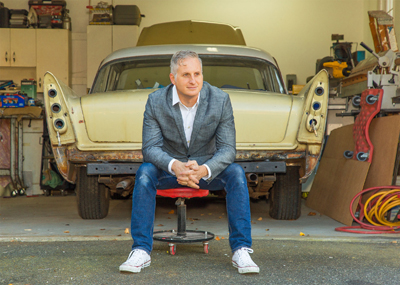Direct Repair Programs (DRPs) were designed in 1963 for an era where all cars were pretty much built and repaired the same way. Lower rates meant the insurance companies would be satisfied, and everyone thought it was a good idea for a while.
Industry veterans say things changed when insurance companies began cutting costs by sacrificing quality. Many body shops were willing to jump through a few hoops to get the volume. When it became more competitive, shops were willing to use more aftermarket, used and reconditioned parts, and became more willing to negotiate on every repair.
Thomas Zoebelein, owner of Stratosphere Studio, recently discussed the future of DRPs in the collision repair industry. He said some compelling things that should interest any body shop owner in the country.
Initially, DRPs worked well because shops that wanted them had to step up their games.
“The DRP forced, or allowed, shops and insurers to focus not on customer acquisition but production,” Zoebelein said. “Every shop tool, business method, marketing tactic and class was centered on production and how to make body shops more efficient.”
That road reached a dead end when vehicle construction moved from mild steel to ultra-high-strength steel a decade ago.
“That's when the repair process changed, and OEM procedures became more and more necessary,” he said. “Now the big dilemma for shops is how to get off the DRPs and get paid more.”
The problem is there are a lot of body shops out there scared to work without DRPs.
“The fear of dumping your DRPs is that if you jump out of a plane every day without your DRP golden parachute, you will crash and die,” Zoebelein said. “The work will dry up, and you will be out of business. The pandemic proved everyone wrong because the cars stopped coming for a while, but the non-DRP shops stayed open.”
Stratosphere Studio has developed a marketing plan, Capture the Keys' “Dump the DRP” program, and forward-thinking shops are embracing it.
Zoebelein is not promising he can help collision repairers replace the volume of a DRP contract.
"So how do you dump a DRP and replace it with a system to get your shop in the hands of customers who need collision repair and keep cars coming into the shop?" Zoebelein said. "What's the most efficient way to reach a person who you know has a collision repair need, where they are buying, when they are buying but just before they make a final decision?
"Geofencing allows you to get in front of that customer, when they are shopping for collision repair, even if it's at just one location," he said. "We don’t care how they got there---DRP referral, family referral, convenient location, marketing, etc. We just need them to be there, and then geofencing will find them, collect their data and offer them a second opinion.
“I believe that the future of collision repair is fewer cars, more money, more profit,” Zoebelein said. “It’s a fact that vehicles will be getting into fewer accidents. The same ADAS systems that shops are currently repairing will be in more and more cars, so shops need to start rethinking tomorrow's volume.
"Autobrake will reduce crashes. And every new vehicle sold now has it, and soon it's going to be federally mandated," he said. "The times have changed, and it's time for shops to reconsider where the industry is right now. On top of everything, these issues with labor rates, supply chain issues and technician shortages is the proverbial straw that is breaking the camel's back.”










Ed Attanasio